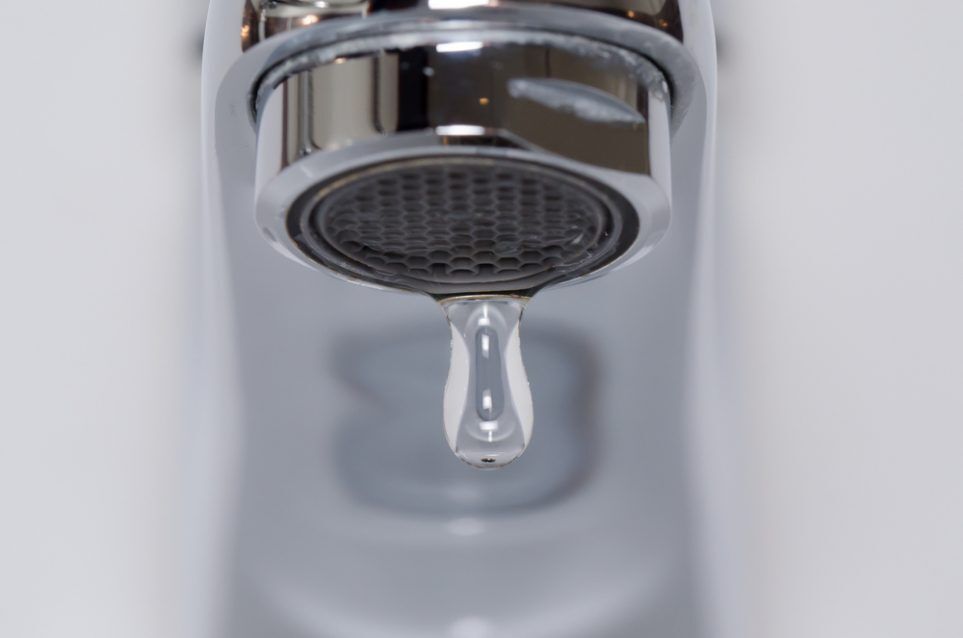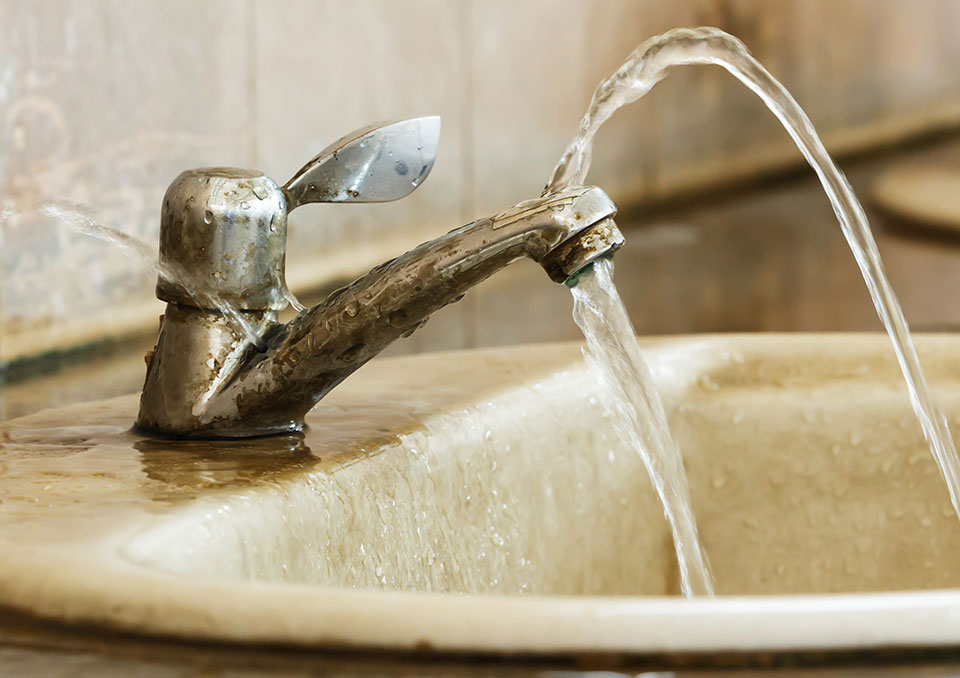Our Reasons Behind Fixing a Faulty Faucet
Our Reasons Behind Fixing a Faulty Faucet
Blog Article
This article in the next paragraphs on the subject of Water Dripping from Faucet: Why and How to Fix is amazingly motivating. Check it out yourself and decide what you think of it.

Trickling faucets might feel like a minor aggravation, however their influence exceeds simply the inconvenience of the sound. From drainage to incurring unneeded economic expenses and wellness risks, ignoring a leaking tap can lead to different effects. In this article, we'll explore why it's essential to address this typical house issue quickly and efficiently.
Waste of Water
Ecological Influence
Trickling taps add considerably to water wastefulness. According to the Epa (EPA), a solitary tap leaking at one drip per second can squander more than 3,000 gallons of water per year. This not just pressures water sources however additionally impacts environments and wild animals dependent on them.
Step-by-Step Overview to Taking Care Of a Dripping Faucet
Devices Required
Prior to attempting to repair a trickling tap, gather the essential tools, including a flexible wrench, screwdrivers, replacement components (such as washing machines or cartridges), and plumber's tape.
Common Tap Issues and Their Solutions
Identify the kind of faucet and the certain concern triggering the drip. Common problems consist of worn-out washers, corroded valve seats, or defective O-rings. Refer to producer guidelines or online tutorials for step-by-step advice on fixings.
Financial Costs
Boosted Water Bills
Past the ecological influence, trickling taps can pump up water costs substantially. The collected waste over time translates into higher energy expenditures, which can have been avoided with timely repairs.
Potential Property Damage
Furthermore, extended leaking can result in damage to fixtures and surfaces surrounding the tap. Water buildup can create discoloration, deterioration, and also architectural concerns if left neglected, resulting in additional fixing prices.
Health Issues
Mold and Mold Growth
The constant visibility of moisture from a trickling tap creates an ideal setting for mold and mold growth. These fungis not only jeopardize indoor air high quality but likewise pose wellness dangers, particularly for individuals with respiratory conditions or allergic reactions.
Waterborne Diseases
Stagnant water in trickling taps can end up being a breeding place for germs and other pathogens, increasing the risk of waterborne diseases. Pollutants such as Legionella bacteria grow in stationary water, potentially leading to severe ailments when consumed or breathed in.
Do it yourself vs. Specialist Repair service
Pros and Cons of DIY Repair Service
While some might attempt to repair a dripping tap themselves, do it yourself repair work come with their very own collection of difficulties. Without proper expertise and tools, DIY efforts can aggravate the problem or result in insufficient repairs, lengthening the issue.
Advantages of Employing a Specialist Plumber
Employing an expert plumber guarantees that the underlying source of the dripping tap is dealt with properly. Plumbings have the proficiency and devices to detect and fix tap problems effectively, conserving time and minimizing the risk of further damages.
Ecological Duty
Specific Payment to Preservation
Taking responsibility for fixing dripping faucets aligns with broader initiatives towards water preservation and ecological sustainability. Every person's activities jointly make a considerable effect on preserving precious sources.
Sustainable Living Practices
By prioritizing punctual repair services and embracing water-saving habits, people contribute to sustainable living techniques that profit both present and future generations.
Safety nets
Routine Upkeep Tips
To avoid dripping faucets, perform regular upkeep such as cleaning up aerators, evaluating for leaks, and replacing damaged components promptly. In addition, consider setting up water-saving tools or upgrading to much more effective components.
Relevance of Prompt Repairs
Dealing with leaking faucets as quickly as they're seen protects against more water wastefulness and possible damage, ultimately saving both water and money in the future.
Influence On Property Value
Perception of Well-Maintained Residential Or Commercial Property
Maintaining a residential or commercial property in good condition, including resolving upkeep issues like leaking faucets, improves its perceived value and desirability amongst potential purchasers or occupants.
Impact on Resale Worth
Properties with well-kept plumbing fixtures, consisting of taps, command higher resale values in the realty market. Dealing with trickling faucets can add to a favorable perception throughout residential property examinations and negotiations.
Conclusion
Addressing a trickling tap goes beyond simple convenience; it's a vital action towards preserving water, lowering economic expenses, and safeguarding health and residential or commercial property. Whether with DIY fixings or professional help, taking action to take care of leaking faucets is a small yet impactful means to advertise liable stewardship of resources and add to a much healthier, a lot more lasting future.
Why Are My Faucets Dripping (And Can I Fix it Myself)?
Causes of a Dripping or Leaking Faucet
Whether you’re hearing drops of water falling and hitting a sink, or noticing water ooze out from the base of the spout, you shouldn’t ignore a dripping or leaking faucet. And, the good news is, sometimes you can fix the problem yourself.
In this article, we’ll review a few common causes of dripping and leaky. We’ll also walk you through some basic ways to find the problem and handle it without calling anyone — and let you know when to call in a pro.
But, no matter what the cause, or whether you can handle it on your own, the sooner you address it, the better.
Each drip may be a tiny amount of water. But, they all add up quickly. According to the U.S. Geological Survey, one faucet losing one drop every 20 seconds — five a minute — wastes around a liter of water every day, and 173 gallons a year.
Add in more than one in your house, and it’s a lot of water to waste. So, we’ll help you get to the bottom of things quickly.
Four Reasons Your Faucet May Be Dripping
Aerator is Damaged or Unseated Valve Seat is Corroded O Ring is Loose or Worn Out Part of the Assembly is Loose Aerator is Damaged or Unseated
If you unscrew the end of your faucet, you’ll find the aerator. It’s the little stem piece with a screen on it that shuts off the water circulation.
If it’s damaged, or if it’s not sitting right, it will allow water to pass through.
Valve Seat is Corroded
Next is the valve seat, which is connected to the washer. If the washer wasn’t in place correctly, then it could have ground against the seat. Over time, this damages the valve seat.
The problem could also be corrosion: Over time, the part has worn out, and it’s now allowing water to pass through.
O Ring is Loose or Worn Out
Since the o ring is only a small rubber gasket, it’s a common reason why the faucet is dripping. You’ll find it at the base of the faucet, and it’s there to keep water from coming out where it’s not supposed to.
However, it’s common for the o ring to wear out over time. When it does, you’ll notice a drip.
Part of the Assembly is Loose
So far, we’ve looked at a few small, specific parts. But, the problem could be anywhere in the assembly if something’s out of place.
Even if a part isn’t damaged, over time, it may have become loose or dislodged. It could be the parts we mentioned, or the aerator at the tip of the faucet, the stem itself,
Can I Fix a Leaky Faucet Myself?
Depending on the problem, and how handy you are, there’s a chance you can fix a leaky faucet without calling a professional. But, you do run the risk of making the problem worse.
If it’s a small drip, you can certainly try a few troubleshooting tactics. We’ll walk you through them in a moment.
But, no matter what, your first step should be shutting off the water coming into the faucet. You should find a shutoff valve under the sink on the pipes leading to it. Turn each one clockwise until they close tightly.
Next, make sure you have the right tools for whatever you’re attempting. It’s tempting to make do with what you have. But, you need the right ones for a reason: You’re often dealing with small parts that can break if you handle them carelessly.
If you’re feeling confident, here are some places to start.
Items Near the Tip of the Faucet
A few of the parts we mentioned — particularly the valve seat and washer — are located at the tip of the faucet where the water comes out. They’re easy to access, making it a good place to start.
Check the O Ring
To check the o ring, you’ll need to take off the spout at the base. It’s easiest on kitchen sinks with long spouts, versus the smaller, bulkier base on most bathroom sinks.
Either way, this can be tricky, so do it carefully and don’t force anything. If it’s not coming right off, you’re much better off calling in a pro than possibly breaking something.
For a kitchen sink, there’s usually a nut or coupling assembly at the base of the spout. These often slide off easily without using any tools.
Once you’ve disassembled those parts, gently but forcefully twist off the spout.
Then, you can see the o rings. There should be two of the rubber gaskets on the base. If they look worn or damaged, replace them, and see if that solves the problem.

As a keen reader on Water Dripping from Faucet: Why and How to Fix, I think sharing that piece of content was important. Be sure to take a moment to share this blog if you appreciated it. I praise you for being here. Don't forget to pay a visit to our blog back soon.
Report this page